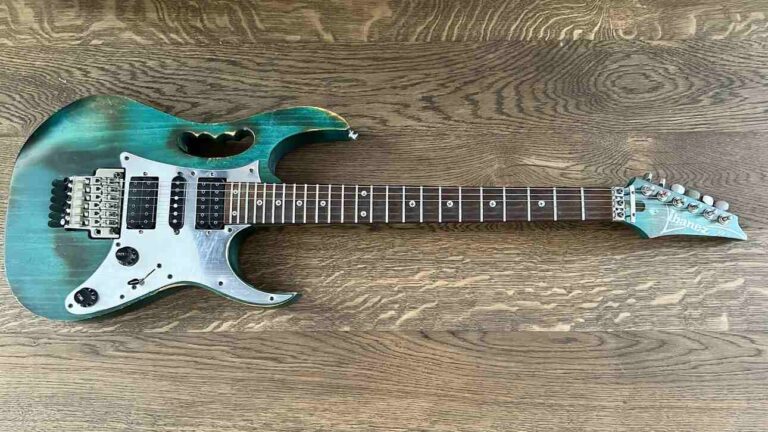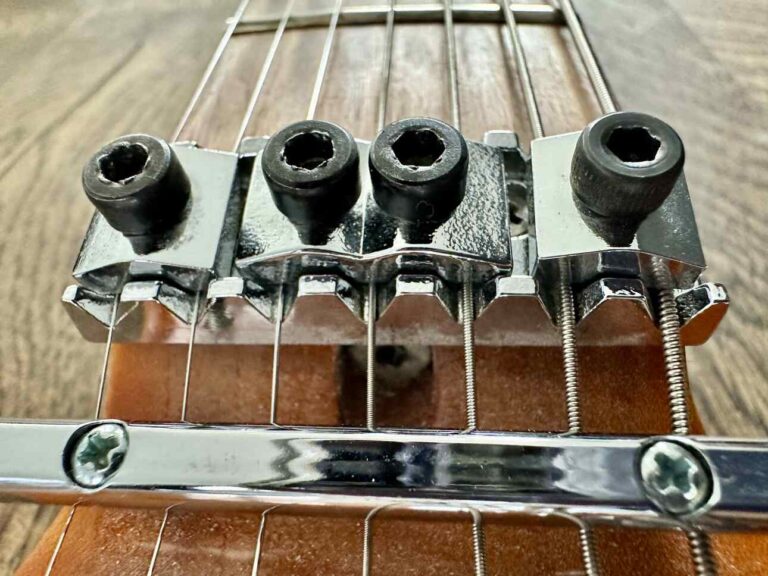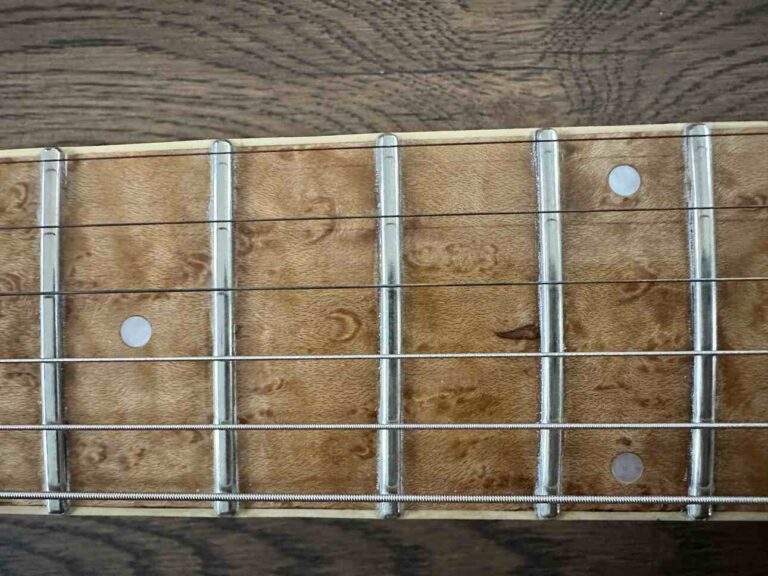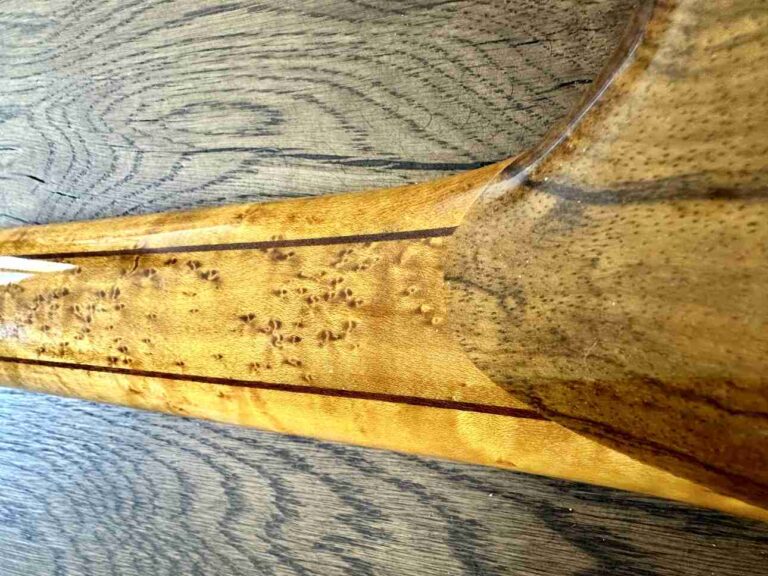What Is The Lightest Electric Guitar Tonewood? Play Lighter
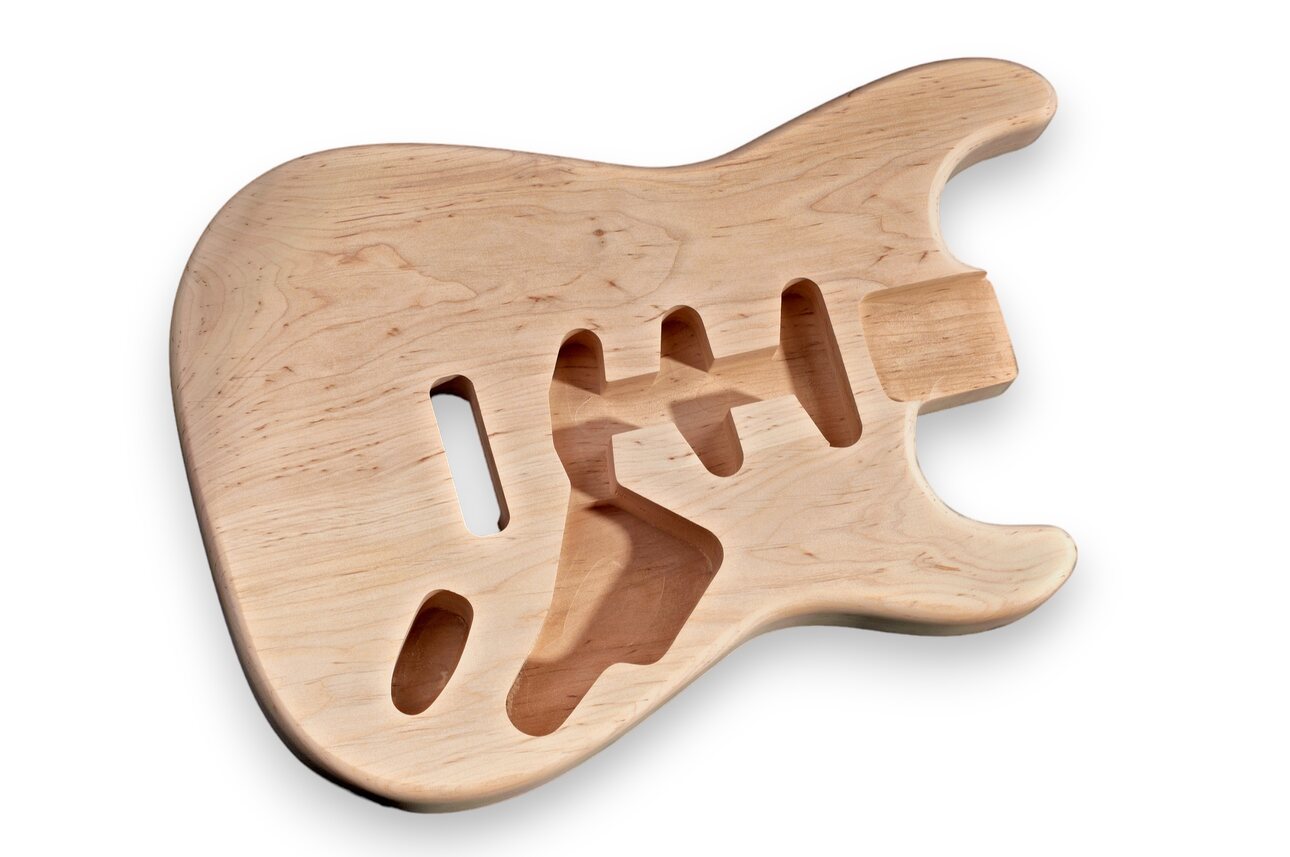
Sure, the type of body wood plays an important role in the sound when it comes to electric guitars. But have you ever thought about the weight of your instrument? And how does it affect the comfort of playing your beloved axe?
In this article, I’ll examine some of the lightest tonewoods used for electric guitars. I’ll discuss their impact on guitar tone and playability.
If you’re in the market for a guitar, I invite you to read on. It’s good to know the characteristics and benefits of these different woods. It will help you make a more informed decision.
Key Takeaways
- Lightest woods have a significant impact on electric guitar tone and playability;
- Several lightweight wood varieties are commonly used in electric guitar construction;
- Care and maintenance are essential for preserving the quality of lightweight wood guitars.
Identifying Lightest Woods for Electric Guitars
Characteristics of Lightest Woods
When searching for the lightest woods for electric guitars, it’s worth knowing the wood density. Wood density refers to the mass of wood and its volume. The lighter the wood, the lower its density.
Some of the lightest woods that you may come across in your search include:
- 1. Basswood: a lightweight tonewood that is relatively soft compared to other woods. It is abundant and often used in guitar manufacturing due to its balanced tone. It offers an excellent low-end response and smooths out bright tones.
- 2. Swamp Ash: a lightweight American wood notable for its distinct ringing tone. It has resonant and bright qualities.
- 3. Alder: Alder is a classic tonewood for electric guitars. It offers a balanced and full-bodied sound with excellent sustain. It’s light in weight, with a range specified as something in the 3lb to 3lb 15oz range for a lightweight version.
- 4. Paulownia: one of the lightest hardwoods and an increasingly popular choice for electric guitar bodies. It is resonant, like Swamp Ash, but is much lighter. It’s the fastest-growing hardwood, making it an environmentally friendly option in guitar construction.
- 5. Poplar: Poplar is another light wood often used as a more affordable alternative to alder. It provides a balanced tone with a slightly softer, less pronounced character. It’s a good choice for players who want a lightweight instrument without a high price tag.
| TONEWOOD | DENSITY (KG/M3) | DENSITY (LB/FT3) |
|---|---|---|
| Basswood | 410 – 450 | 25.6 – 28.1 |
| Swamp Ash | 450 – 510 | 28.1 – 31.8 |
| Alder | 450 – 490 | 28.1 – 30.6 |
| Paulownia | 290 | 18.1 |
| Poplar | 330 – 500 | 20.6 – 31.2 |
Remember, these values are approximate. They can vary based on the specific piece of wood and its moisture content. The densities provided here are general figures to give you an idea of how light each tonewood is.
As the table indicates, paulownia’s density is much lower than the others. This makes it one of the lightest options available.
Benefits of Lighter Wood in Guitars
Using lighter wood for electric guitars can benefit you as the player and your instrument’s sound.
Here are some advantages you’ll experience with lighter wood in your guitar:
- Comfort: Lighter guitars are generally more comfortable to hold and play. Especially during extended practice sessions or performances;
- Balance: A lighter body can help maintain a better balance between the neck and body. This makes it easier to play and maneuver;
- Resonance: Lighter woods often produce a bright and lively sound quality. It gives your guitar a unique tone;
- Reduced Fatigue: Playing a lighter guitar helps reduce physical fatigue in your arms and shoulders.
Physical Properties and Tone Attributes
Density and Resonance
When selecting the wood for your electric guitar, consider its density and impact on the instrument’s resonance.
Generally, lighter woods offer a more balanced tone. Denser woods contribute to a full sound.
Swamp Ash is one of the lightest woods for electric guitars, known for its low density and good resonance. It results in a guitar with a relatively light weight.
This makes it comfortable to play for long periods. It also provides excellent sound projection.
Tonal Qualities and Sound Projection
Different wood types offer unique tonal attributes and affect your guitar’s sound projection. For instance, lighter wood, like swamp ash, has a bright, warm tone due to its low density.
It contributes to increased resonance and lively sound projection.
To illustrate the correlation between wood density and tonal properties, here is a comparison of commonly used guitar woods:
| WOOD TYPE | DENSITY | TONAL PROPERTIES |
|---|---|---|
| Swamp Ash | Low | Bright, warm, balanced |
| Alder | Medium | Warm, full-bodied |
| Mahogany | High | Warm, rich, resonant |
Impact of Light Woods on Guitar Playability
Weight and Comfort
One of the main benefits of using lightweight wood for electric guitars is increased comfort. Lighter woods, such as paulownia, make the guitar easier to hold. It also causes less strain on your shoulder and back.
This allows you to focus more on playing and less on the discomfort of holding a heavy instrument.
Many factors affect the final weight. Besides the body wood, the hardware and the size of the body also play a role.
Playability for Guitarists
Lighter woods provide comfort and can influence your instrument’s playability. They allow a more balanced feel.
In other words: The right combination of materials can help you find the perfect balance between comfort, playability, and tone.
Comparing Lightwoods with Heavier Alternatives
Mahogany and Maple
You may come across mahogany and maple when choosing the right wood for your electric guitar. Both woods are very popular but heavier and harder compared to lighter alternatives.
Mahogany provides warmth and resonance, while maple offers a bright and clear tone. Let’s compare these two heavier woods with some lighter options.
- Mahogany – This hardwood is denser and produces a warm, full sound. It’s often used for guitar bodies and necks, contributing to a long sustain and a rich midrange tone;
- Maple – Maple is a heavy wood with a bright and clear tone. It’s often used for electric guitar bodies, necks, and tops. This is due to its unique tonal characteristics.
Characteristics of Heavier Woods
Heavier woods such as mahogany and maple have characteristics that set them apart from lighter alternatives.
- Density: Both mahogany and maple are denser and harder than lighter woods. This produces a more resonant and fuller tone, particularly in the midrange frequencies. It also makes the guitar more durable and resistant to wear and tear;
- Tonal qualities: As mentioned earlier, mahogany provides a warm and full sound, while maple is brighter with more clarity. Heavier woods produce a rich, more nuanced tone that some players prefer over lighter options.
Consider and compare these characteristics with lighter alternatives like basswood or alder. Your choice will depend on your preferences and the specific tone you’re aiming for.
Expert Tips for Choosing Guitar Wood
Assessing Your Sound Preferences
When purchasing your ideal (custom) guitar, it’s essential to consider the type of body wood. Different woods influence the sound and responsiveness of the guitar.
To select the best wood for your guitar, determine your preferred tonal characteristics.
Here are a few general traits to consider:
- Warm tone: Mahogany, walnut, or rosewood;
- Bright tone: Maple, ash, or alder;
- Balanced tone: Cherry, poplar, or basswood.
Considering Guitar Type and Style
As you explore various wood options, it’s also important to consider the type and style of guitar you want. The choice of wood for an acoustic guitar will differ from that of an electric guitar.
Electric guitars often combine different types of wood to achieve a desired tonal balance. They are also used to create visual appeal (think maple tops).
Some wood types may be more suitable for specific genres than others. You may prefer a snappy, bright sound on your custom guitar. Consider a guitar with lighter wood like paulownia or swamp ash in that case.
Another factor to consider is the guitar’s weight. Especially if you plan on using it for extended periods. For instance, during live performances or practice sessions.
Lighter woods can offer greater comfort during prolonged use. This allows you to focus on your performance without unnecessary stress on your body.
Wood Varieties and Their Influence on Guitar Tone
Exploring Exotic and Traditional Wood Options
Exotic and traditional woods have unique characteristics that impact your guitar’s tone. Ash is a common choice for electric guitar bodies due to its lightweight nature and bright sound.
On the other hand, mahogany offers a warm, rich tone but is not the lightest variety. Other options, like alder and swamp ash, are popular among guitar makers for being lightweight and providing a balanced tone.
As for exotic wood options, korina (also known as white limba) is exciting. It has distinct tonal characteristics. Another exotic option is bubinga, which is dense and heavy.
Be careful if you’re going for an exotic body wood, though. They may not be available due to conservation efforts.
Influence of Wood Grain and Quality
The grain of the wood can have a significant effect on the aesthetics and tone of the guitar. Factors such as wood density and stiffness also play a role. For example, a denser, stiffer wood will produce a brighter sound. A softer wood will produce a warmer tone.
Moreover, the wood quality is essential to the guitar’s resonance and sustain. Higher-quality woods are more consistent in grain, producing a purer and more even tone.
Also good to know: the direction and orientation of the wood grain can affect your guitar’s stability and structural integrity.
Care and Maintenance
There are several factors to consider when it comes to maintaining and caring. First off, protect the lighter wood body and establish long-term wood care practices. This preserves the guitar’s appearance, playability, and sound quality.
Protecting Lighter Wood Bodies
Lighter wood bodies need extra attention to remain in optimal condition. Here are a few tips to protect your guitar’s lightweight wood body:
- Use a quality case: Always store your guitar in a protective case when unused. This shields it from dust, humidity, and temperature fluctuations;
- Clean regularly: Gently wipe down the guitar body with a lint-free cloth to remove any dirt, sweat, or oils;
- Avoid direct sunlight: Prolonged exposure to direct sunlight can cause the wood to warp or fade in color. Store your guitar in a cool, dry place away from direct sunlight;
- Control humidity: Maintain a consistent humidity level between 40-50%. This helps to prevent wood swelling or cracking due to changes in moisture.
Long-Term Wood Care Considerations
Maintaining the health of your lightweight wood guitar involves several long-term care practices. Here are some tips to follow for optimal guitar longevity:
- Regularly inspect and adjust the truss rod: The truss rod maintains the neck’s proper curvature. Inspect and adjust it as needed to ensure the neck stays in the correct position;
- Oil the fretboard: Occasionally apply a light coat of high-quality fretboard oil. This prevents the wood from drying out and cracking;
- Watch for signs of wear or damage: Inspect your guitar for any signs of wear. This includes loose hardware, cracks, or other damage. Address any issues, seeking professional help when necessary;
- Change strings when needed: Over time, guitar strings can stretch, wear down, and rust. Replace them regularly or when they become worn. This way, you maintain optimal sound quality and playability.
Frequently Asked Questions
What is a Guitar Body?
The body of an electric guitar is the large, central part where you’ll find the bridge, the pickups, volume and tone knobs and the output jack. It can be solid, semi-hollow, or hollow, with most electric guitars having a solid body.
The body is typically made of wood such as maple, mahogany, alder, or ash. It plays a crucial role in determining the instrument’s tone and sustain. The shape of the body also affects the guitar’s aesthetic appeal and the player’s comfort while holding and playing the instrument.
What is a Tonewood?
Tonewood is a type of wood that is selected for use in musical instruments. This is due to its ability to produce a specific quality of sound. The term is most often associated with woods used in the construction of woodwind or acoustic stringed instruments such as guitars, violins, and cellos.
Different types of wood can affect the timbre, resonance, and tone of the instrument. This makes the choice of tonewood important in the design and construction of a guitar. The characteristics of a tonewood contribute to the way the wood vibrates. Factors such as density, grain, and stiffness play a role. As a result, it amplifies the sound produced by the instrument.

